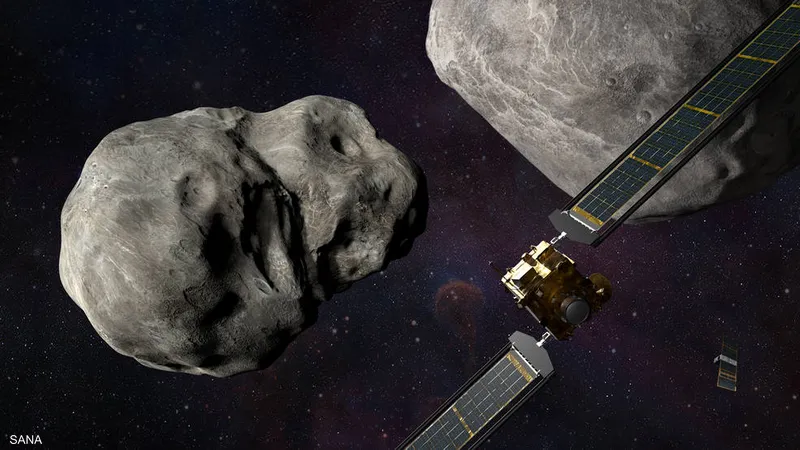A new NASA experiment will probe our ability to protect Earth
The world is awaiting the results of the expected step of the International Space Agency, NASA, on Monday, during which a spacecraft is supposed to deliberately collide with an asteroid to divert its course, in an attempt to probe human capabilities to protect the planet from destruction.
According to the "Washington Post", the size of the vehicle, " Double Asteroid Redirection Test ", is smaller than the size of a car, and launched into space last November.
NASA considered that taking this step is important in the context of the need to explore capabilities to protect the planet from any potential future threats.
Astronomy in the Cradle of Arab-Islamic Civilization: Foresight and Leadership
The asteroid " Demorphos " and the largest asteroid that "Dedemos" orbits around the sun at a distance of about seven million miles from Earth at its closest point, and therefore there is no need to panic.
At a press conference last Thursday, Lindley Johnson, an official in the Planetary Defense Division at NASA, told reporters, "This is an important moment not only for NASA but also for space history and human history."
NASA decides to postpone the launch of its new rocket due to a storm
The collision between the spacecraft and the asteroid is expected to occur at 19:14 ET (23:14 GMT) and can be followed through the International Space Agency's live broadcast .
In order to hit this small target, the vehicle will fly autonomously during the last four hours of flight, like a self- guided missile .
It is scheduled to capture the "Draco" cameras, the first images of the asteroid, which is not at the last moment, at a rate of images per second, and it will be possible to see it directly on Earth with a delay of only about 45 seconds.
Minutes later, the satellite, which separated from the craft two weeks ago, will pass near the site to capture and document images of the impact.
It is scheduled to monitor this step a group of telescopes, on the ground and in space, including the " James Webb " telescope , and may be able to see a cloud of luminous dust.
And if the vehicle misses its target, it will have enough fuel for another try within two years.
https://www.skynewsarabia.com/technology/1558301-%D8%AA%D8%AC%D8%B1%D8%A8%D8%A9-%D8%AC%D8%AF%D9%8A%D8%AF%D8%A9-%D9%84%D9%86%D8%A7%D8%B3%D8%A7-%D8%B3%D8%AA%D8%B3%D8%A8%D8%B1-%D9%82%D8%AF%D8%B1%D8%AA%D9%86%D8%A7-%D8%AD%D9%85%D8%A7%D9%8A%D8%A9-%D8%A7%D9%84%D8%A7%D9%94%D8%B1%D8%B6?fbclid=IwAR1efYaR9bL_9ymXoR9ZDM9VKxMuh5RmFfVr1YT80yYaOBxTdnIc49NKt6M


